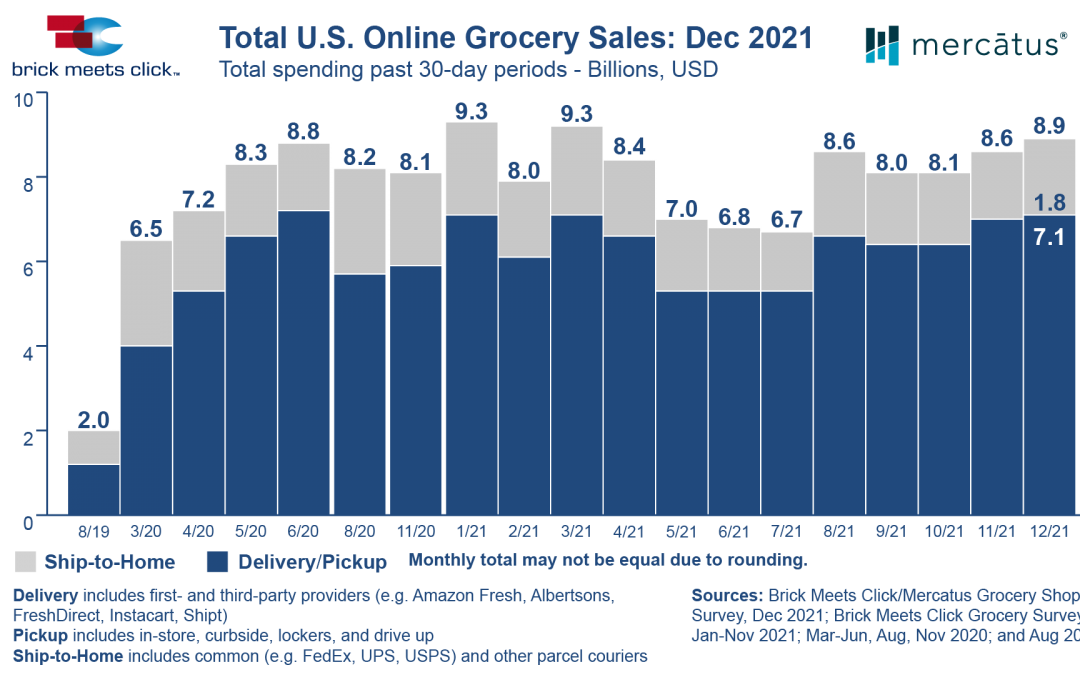Total online grocery sales were $97.7 billion in 2021, according to a report from analytics firm Brick Meets Click. Total sales were spurred on by a strong showing in December when online sales neared $9 billion. Online grew its share of the market two points during the year and accounted for 13 percent of U.S. grocery sales in 2021.
“The U.S. is a pickup-dominant market,” claims the report.
Pickup’s share of the market increased five points to 45 percent. Delivery held steady at 33 percent of sales, while ship-to-home—orders from companies such as Misfits Market, which deliver groceries through a parcel courier such as UPS or USPS—captured 22 percent of the market, down five points for last year. While pickup is dominant, the report notes that delivery is on the rise in some dense urban markets, and overtook pickup in the final month of 2021.
David Bishop, a partner at Brick Meets Click, said the rise of rapid delivery services may explain the shift towards delivery. Companies such as Getir, Jokr and Buyk promise grocery delivery in 15 minutes or less and are discounting heavily as they fight for market share.
Rapid grocery delivery firms spent most of 2021 promising to expand, and several delivered late in the year with expansions to Boston and Chicago, among other cities. If the press releases are to be believed, the sector will expand its geographic reach further in 2022.
That’s not good news for traditional grocers. Bishop previously told Food On Demand that grocers should seek to increase pickup orders to achieve sustainable digital profits. The rise of a convenient and (for now) inexpensive delivery option could shift consumer habits. And, of course, the appearance of venture-funded competitors will be a challenge for the often staid industry.
Online spending wasn’t limited to pure-play grocery companies. Brick Meets Click also tracks grocery orders at “supercenter” stores. The report indicates that nearly 30 percent of online grocery shoppers also placed grocery orders at supercenters. Interestingly, the report claims cross-shopping with Target was up significantly, while cross-shopping with Walmart, the largest grocer in the U.S. by sales, fell slightly.
The rise of cross-shopping may indicate that customers have grown accustomed to shopping for groceries online, the way they would for any other item. Supporting the point, average monthly orders held relatively steady at 2.74 per month per monthly average user, and the report claims that order frequency volatility fell 60 percent relative to 2021. However, given the prevalence of COVID-19 variants, it’s unclear if habits have become entrenched or if conditions have simply remained static.
Brick Meets Click’s State of the US eGrocery Market report is based on monthly surveys (n = 1,700 – 2,000) conducted in 2021.


